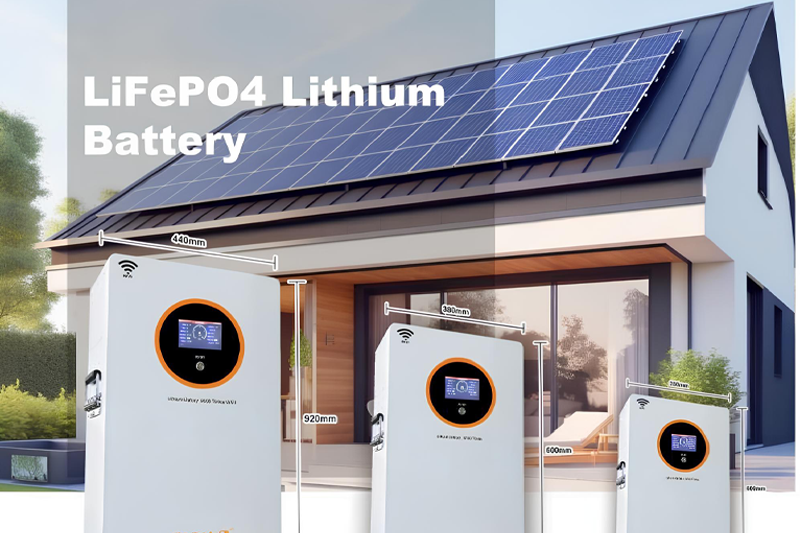The rapid growth of global renewable energy presents vast opportunities alongside challenges. Smart inverters, crucial technologies, enhance stability and efficiency in solar and wind energy sectors. This article delves deep into how smart inverters, such as those in solar, wind turbine, and hybrid systems, can boost the efficiency of renewable energy sources.
Understand the role of inverters in renewable energy systems
Basic knowledge of solar inverter
Solar inverters are a key component in any photovoltaic (PV) system. It converts direct current (DC) generated by solar panels into alternating current (AC), which can be used to power homes, businesses or fed back to the grid. The efficiency and reliability of solar inverters are critical to maximizing energy output and ensuring the longevity of the entire photovoltaic system.
The evolution of wind turbine inverters
Likewise, wind turbine inverters play a key role in converting variable frequency AC power produced by wind turbines into stable, grid-compatible AC power. These inverters must handle the volatility of wind energy to ensure consistent and reliable power delivery to the grid. Advanced wind grid-tied inverter technology is critical to optimizing the performance of wind farms and seamlessly integrating them into existing power infrastructure.

Advantages of Hybrid Solar Inverter
What is a hybrid solar inverter?
A hybrid solar inverter is a versatile device merging traditional solar inverter and inverter generator roles. It converts DC solar power to AC and oversees battery energy storage and discharge. This dual operation suits off-grid and grid-tied setups, offering a dependable, efficient solution for both residential and commercial uses.
How Hybrid Solar Inverters Improve System Efficiency
With integrated battery storage, hybrid solar inverters can store excess energy generated during peak production times and release it when demand is high or sunlight is insufficient. This feature ensures a more stable and reliable power supply, reducing dependence on the grid and minimizing energy costs. Additionally, hybrid solar inverters can provide backup power during power outages, enhancing the overall resiliency of the energy system.
Smart Inverter Technology: The Future of Grid Integration
The Role of Intelligent Inverters in Grid Stabilization
Intelligent inverters, equipped with advanced communication and control capabilities, are transforming the way renewable energy is integrated into the grid. These devices can communicate with the grid, adjust their output in real-time, and provide grid services such as voltage and frequency regulation. By doing so, they help maintain the stability and reliability of the grid, even as the proportion of renewable energy increases.
Features of Smart Inverters
- Advanced Communication: Smart inverters can communicate with the grid and other distributed energy resources (DERs) using standardized protocols. This allows for coordinated operation and optimization of the entire energy system.
- Real-Time Monitoring and Control: These inverters can monitor the grid conditions and adjust their output accordingly. For example, if the grid frequency drops, a smart inverter can reduce its power output to help stabilize the grid.
- Grid Support Services: Smart inverters can provide ancillary services such as reactive power support, which helps to regulate voltage levels and maintain the quality of the power supply.
- Predictive Analytics: By leveraging data analytics and machine learning, smart inverters can predict future energy demand and generation patterns, enabling better planning and management of the energy system.

Integrating Wind and Solar Power with Smart Inverters
Wind Solar Hybrid Inverters: A Synergistic Solution
Wind solar hybrid inverters combine the functionalities of both wind inverter and solar inverter systems, creating a more robust and flexible energy solution. These inverters can manage the varying outputs from both wind and solar sources, ensuring a stable and continuous power supply. By integrating these two renewable energy sources, wind solar hybrid inverters can optimize the overall energy production and reduce the intermittency issues associated with individual sources.
Case Studies: Successful Implementation of Smart Inverters
- Case Study 1: Residential Application
- Location: California, USA
- System Configuration: 5 kW solar PV system with a 10 kWh battery storage and a hybrid solar inverter
- Results: The homeowner was able to achieve significant energy savings and reduce their reliance on the grid. The hybrid solar inverter ensured a smooth and reliable power supply, even during peak demand periods and grid outages.
- Case Study 2: Commercial Application
- Location: Germany
- System Configuration: 1 MW wind farm with a 500 kW wind turbine inverter and a 1 MWh battery storage system
- Results: The wind farm was able to provide stable and consistent power to the grid, thanks to the advanced control capabilities of the wind turbine inverter. The system also provided grid support services, contributing to the overall stability of the regional power network.
Challenges and Considerations
Technical Challenges
Interoperability: Ensuring that different types of inverters and energy storage systems can work together seamlessly is a significant challenge. Standardized communication protocols and interoperability standards are essential for effective integration.
Cost: While the long-term benefits of smart inverters are substantial, the initial investment can be high. However, as the technology matures and adoption increases, the cost is expected to decrease.
Regulatory and Policy Considerations
Grid Codes and Standards: Many countries have specific grid codes and standards that govern the connection and operation of renewable energy systems. These regulations often require inverters to have certain features and capabilities to ensure grid stability.
The government helps promote smart inverters
By encouraging research and providing subsidies, the government can make smart inverters more accessible to everyone. This technology can make solar and wind power generation more powerful and stable.
Smart inverters are important
Smart inverters are like super tools that can make solar panels and wind turbines work better, and make the entire power grid more solid and less prone to problems. In the future, we will use more clean energy, and smart inverters will become more important.
With smart inverters, the future is better
With smart inverters, we can better utilize solar and wind energy, giving our descendants a more reliable, more energy-efficient, and more environmentally friendly future.
Learn More:Company Overview – ELEGE NEW ENERGY (ZHANGJIAGANG) CO.,LTD (alibaba.com)
